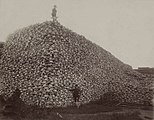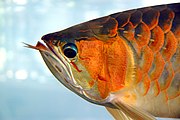| Conservation status | |
|---|---|
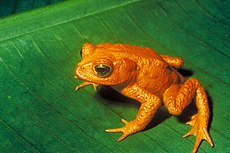 | |
| Extinct | |
| Threatened | |
| Lower Risk | |
Other categories | |
| ( list) | |
Related topics | |
 Comparison of Red List classes above and NatureServe status below  | |


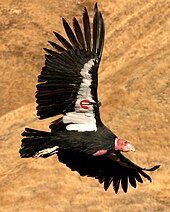
An endangered species is a species that is very likely to become extinct in the near future, either worldwide or in a particular political jurisdiction. Endangered species may be at risk due to factors such as habitat loss, poaching, and invasive species. [1] The International Union for Conservation of Nature (IUCN) Red List lists the global conservation status of many species, and various other agencies assess the status of species within particular areas. Many nations have laws that protect conservation-reliant species which, for example, forbid hunting, restrict land development, or create protected areas. Some endangered species are the target of extensive conservation efforts such as captive breeding and habitat restoration.
Human activity is a significant cause in causing some species to become endangered. [2] [3] [4] [5]
Conservation status

The conservation status of a species indicates the likelihood that it will become extinct. Multiple factors are considered when assessing the status of a species; e.g., such statistics as the number remaining, the overall increase or decrease in the population over time, breeding success rates, or known threats. [7] The IUCN Red List of Threatened Species is the best-known worldwide conservation status listing and ranking system. [8]
Over 50% of the world's species are estimated to be at risk of extinction, [9] but the frontier between categories such as 'endangered', 'rare', or 'locally extinct' species is often difficult to draw given the general paucity of data on most of these species. This is notably the case in the world Ocean where endangered species not seen for decades may go extinct unnoticed. [10]
Internationally, 195 countries have signed an accord to create Biodiversity Action Plans that will protect endangered and other threatened species. In the United States, such plans are usually called Species Recovery Plans.
IUCN Red List


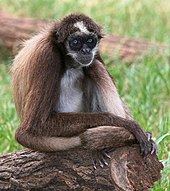
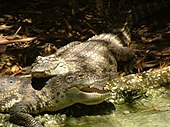



Though labeled a list, the IUCN Red List is a system of assessing the global conservation status of species that includes "Data Deficient" (DD) species – species for which more data and assessment is required before their situation may be determined – as well species comprehensively assessed by the IUCN's species assessment process. [12] The species under the index include: mammals, birds, amphibians, cycads, and corals. Those species of " Near Threatened" (NT) and " Least Concern" (LC) status have been assessed and found to have relatively robust and healthy populations, though these may be in decline. Unlike their more general use elsewhere, the List uses the terms "endangered species" and "threatened species" with particular meanings: "Endangered" (EN) species lie between " Vulnerable" (VU) and " Critically Endangered" (CR) species. In 2012, the IUCN Red List listed 3,079 animal and 2,655 plant species as endangered (EN) worldwide. [12]
In Brazil
Brazil is one of the most biodiverse countries in the world, if not the most. It houses not only the Amazon forest but the Atlantic forest, the savanna-like Cerrado among other biomes. [13] Due to the high density of some of its well-preserved rainforests, wildlife trafficking, which along with deforestation is one of the biggest endangerment drivers in Brazil, has become a challenge. Brazil has a broad legal system meant to protect the environment, including its Constitution, [14] as well as several federal, state and local government agencies tasked with protecting the fauna and flora, fining individuals or companies linked to environmental crimes and confiscating illegally taken wildlife. Though such agencies can collect their data, each system operates relatively on its own when it comes to wildlife trafficking. However, both the agencies and the NGO's working in Brazil agree that the birds account for about 80% of trafficked species in the country. [15]
The relation between wildlife smuggling, other environment crimes under the Brazilian law such as deforestation, and endangered species is particularly intricate and troubling since the rarer the animal or plant gets the most targeted and valuable they become in the black market, which leads to more endangered species in its turn. [16]
Additionally, some environment experts and scientists point to the disbanding of environment agencies and the repeal of laws in Brazil under the presidency of Jair Bolsonaro as one of the reasons behind a surge in the number of endangered species. [17] In one occasion during his presidency some fines totaling US$3.1 billion on environment criminals were revoked and at least one fine (related to illegal fishing) imposed on Bolsonaro himself was cancelled and the agent who fined him was demoted. [18]
In the past, Brazil has successfully saved the endemic golden lion tamarin from extinction. Massive campaigns to raise awareness among people by NGO's and governments, which included printing depictions of the golden lion tamarin in the 20 reais Brazilian banknotes (still in circulation), are credited with getting the species out of the critically endangered animals list. [19] [20]
In the United States
There is data from the United States that shows a correlation between human populations and threatened and endangered species. Using species data from the Database on the Economics and Management of Endangered Species database and the period that the Endangered Species Act (ESA) has been in existence, 1970 to 1997, a table was created that suggests a positive relationship between human activity and species endangerment. [21]
Impact of Climate Change on Endangered Species
Carbon dioxide in Earth's atmosphere is asserted to be one of the leading causes of animal endangerment. According to the US National Park Service: [22]
If we can sufficiently reduce greenhouse gas emissions, many of them will still have a chance to survive and recover. NASA scientist James Hanson has warned that in order to maintain a climate similar to that under which human civilization developed and similar to that which so many organisms are adapted, we need to quickly reduce the carbon dioxide in our atmosphere to 350 parts per million (ppm). Before the industrial revolution, atmospheric carbon dioxide levels rarely rose above 280 ppm; during the 2014 calendar year, carbon dioxide levels fluctuated between 395 and 402 ppm.

Endangered Species Act
Under the Endangered Species Act of 1973 in the United States, species may be listed as "endangered" or "threatened". The Salt Creek tiger beetle (Cicindela nevadica lincolniana) is an example of an endangered subspecies protected under the ESA. The US Fish and Wildlife Service, as well as the National Marine Fisheries Service are held responsible for classifying and protecting endangered species. They are also responsible for adding a particular species to the list, which can be a long, controversial process. [23]
Some endangered species laws are controversial. Typical areas of controversy include criteria for placing a species on the endangered species list and rules for removing a species from the list once its population has recovered. Whether restrictions on land development constitute a "taking" of land by the government; the related question of whether private landowners should be compensated for the loss of uses of their areas; and obtaining reasonable exceptions to protection laws. Also lobbying from hunters and various industries like the petroleum industry, construction industry, and logging, has been an obstacle in establishing endangered species laws.
The Bush administration lifted a policy that required federal officials to consult a wildlife expert before taking actions that could damage endangered species. Under the Obama administration, this policy was reinstated. [24]
Being listed as an endangered species can have negative effect since it could make a species more desirable for collectors and poachers. [25] This effect is potentially reducible, such as in China where commercially farmed turtles may be reducing some of the pressure to poach endangered species. [26]
Another problem with the listing species is its effect of inciting the use of the "shoot, shovel, and shut-up" method of clearing endangered species from an area of land. Some landowners currently may perceive a diminution in value for their land after finding an endangered animal on it. They have allegedly opted to kill and bury the animals or destroy habitat silently. Thus removing the problem from their land, but at the same time further reducing the population of an endangered species. [27] The effectiveness of the ESA – which coined the term "endangered species" – has been questioned by business advocacy groups and their publications but is nevertheless widely recognized by wildlife scientists who work with the species as an effective recovery tool. Nineteen species have been delisted and recovered [28] and 93% of listed species in the northeastern United States have a recovering or stable population. [29]
Currently, 1,556 endangered species are under protection by government law. This approximation, however, does not take into consideration the species threatened with endangerment that are not included under the protection of laws like the Endangered Species Act. According to NatureServe's global conservation status, approximately thirteen percent of vertebrates (excluding marine fish), seventeen percent of vascular plants, and six to eighteen percent of fungi are considered imperiled. [30]: 415 Thus, in total, between seven and eighteen percent of the United States' known animals, fungi and plants are near extinction. [30]: 416 This total is substantially more than the number of species protected in the United States under the Endangered Species Act.


Ever since humankind began hunting to preserve itself, over-hunting and fishing have been a large and dangerous problem. Of all the species who became extinct due to interference from humankind, the dodo, passenger pigeon, great auk, Tasmanian tiger and Steller's sea cow are some of the more well known examples; with the bald eagle, grizzly bear, American bison, Eastern timber wolf and sea turtle having been poached to near-extinction. Many began as food sources seen as necessary for survival but became the target of sport. However, due to major efforts to prevent extinction, the bald eagle, or Haliaeetus leucocephalus is now under the category of Least Concern on the red list. [31] A present-day example of the over-hunting of a species can be seen in the oceans as populations of certain whales have been greatly reduced. Large whales like the blue whale, bowhead whale, finback whale, gray whale, sperm whale, and humpback whale are some of the eight whales which are currently still included on the Endangered Species List. Actions have been taken to attempt a reduction in whaling and increase population sizes. The actions include prohibiting all whaling in United States waters, the formation of the CITES treaty which protects all whales, along with the formation of the International Whaling Commission (IWC). But even though all of these movements have been put in place, countries such as Japan continue to hunt and harvest whales under the claim of "scientific purposes". [32] Over-hunting, climatic change and habitat loss leads in landing species in endangered species list. It could mean that extinction rates could increase to a large extent in the future.
In Canada
Endangered species are addressed through Canada's Species at Risk Act. A species is deemed threatened or endangered when it is on the verge of extinction or extirpation. Once a species is deemed threatened or endangered, the Act requires that a recovery plan to be developed that indicates how to stop or reverse the species' population decline. [33] As of 2021, the Committee on the Status of Endangered Wildlife In Canada has assessed 369 species as being endangered in Canada.
In India
The World Wide Fund-India raises concern in the longevity of the following animal species: the Red Panda, the Bengal Tiger, the Ganges River Dolphin, the Asian Elephant. [34]
India signed the Wildlife Protection Act and the also joined the Convention on the International Trade in 1976, to prevent poaching from harming its wildlife. [35]
Invasive species
The introduction of non-indigenous species to an area can disrupt the ecosystem to such an extent that native species become endangered. Such introductions may be termed alien or invasive species. In some cases, the invasive species compete with the native species for food or prey on the natives. In other cases, a stable ecological balance may be upset by predation or other causes leading to unexpected species decline. New species may also carry diseases to which the native species have no exposure or resistance. [36]
Climate change
The World Wildlife Fund (WWF) emphasizes that our planet is warming at a rate faster than any time in the past 10,000 years, necessitating species to adapt to new climate patterns, such as variations in rainfall and longer, warmer summers. [37] For example, the U.S. Fish & Wildlife Service highlighted efforts to understand and mitigate the impact of climate change on species through scientific research, modeling, and conservation actions. This includes evaluating the current condition of species, their genetic variation, and how changes in their environment may affect their survival. [38]
The International Union for Conservation of Nature (IUCN) reports that the approximately 1°C rise in mean global temperature due to human activities is causing serious impacts on species, including changes in abundance, genetic composition, behavior, and survival. The IUCN stresses the importance of environmental policies aimed at reducing CO2 emissions to lessen the impact of climate change on species. Tools like the IUCN Red List and guidelines for assessing species' vulnerability to climate change are vital for conservation efforts. [39]
In addition, climate change can lead to species disappearing from areas where they once thrived, or even going extinct. A study cited by WWF found that one in six species is at risk of extinction due to climate change if no action is taken. The phenomenon of species shifting their ranges in response to changing climates, finding new or shrinking habitats, illustrates the direct impact of global warming on biodiversity. [37]
For example the Emperor Penguins, which rely on Antarctic sea ice for breeding, shelter, and food. The melting of ice sheets poses a direct threat to their survival. Similarly, the Mount Rainier white-tailed ptarmigan, adapted to alpine mountaintops, faces habitat loss due to climate changes in snowfall patterns and rising temperatures. [40]
Conservation

Captive breeding
Captive breeding is the process of breeding rare or endangered species in human controlled environments with restricted settings, such as wildlife reserves, zoos, and other conservation facilities. Captive breeding is meant to save species from extinction and so stabilise the population of the species that it will not disappear. [41]
This technique has worked for many species for some time, with probably the oldest known such instances of captive mating being attributed to menageries of European and Asian rulers, an example being the Père David's deer. However, captive breeding techniques are usually difficult to implement for such highly mobile species as some migratory birds (e.g. cranes) and fishes (e.g. hilsa). Additionally, if the captive breeding population is too small, then inbreeding may occur due to a reduced gene pool and reduce resistance.

In 1981, the Association of Zoos and Aquariums (AZA) created a Species Survival Plan (SSP) to help preserve specific endangered and threatened species through captive breeding. With over 450 SSP Plans, some endangered species are covered by the AZA with plans to cover population management goals and recommendations for breeding for a diverse and healthy population, created by Taxon Advisory Groups. These programs are commonly created as a last resort effort. SSP Programs regularly participate in species recovery, veterinary care for wildlife disease outbreaks, and some other wildlife conservation efforts. The AZA's Species Survival Plan also has breeding and transfer programs, both within and outside of AZA – certified zoos and aquariums. Some animals that are part of SSP programs are giant pandas, lowland gorillas, and California condors. [42]
Private farming

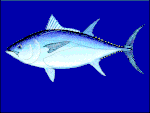
Whereas poaching substantially reduces endangered animal populations, legal, for-profit, private farming does the opposite. It has substantially increased the populations of the southern black rhinoceros and southern white rhinoceros. Richard Emslie, a scientific officer at the IUCN, said of such programs, "Effective law enforcement has become much easier now that the animals are largely privately owned... We have been able to bring local communities into conservation programs. There are increasingly strong economic incentives attached to looking after rhinos rather than simply poaching: from Eco-tourism or selling them on for a profit. So many owners are keeping them secure. The private sector has been key to helping our work." [43]
Conservation experts view the effect of China's turtle farming on the wild turtle populations of China and South-Eastern Asia – many of which are endangered – as "poorly understood". [44] Although they commend the gradual replacement of turtles caught wild with farm-raised turtles in the marketplace – the percentage of farm-raised individuals in the "visible" trade grew from around 30% in 2000 to around 70% in 2007 [45] – they worry that many wild animals are caught to provide farmers with breeding stock. The conservation expert Peter Paul van Dijk noted that turtle farmers often believe that animals caught wild are superior breeding stock. Turtle farmers may, therefore, seek and catch the last remaining wild specimens of some endangered turtle species. [45]
In 2015, researchers in Australia managed to coax southern bluefin tuna to breed in landlocked tanks, raising the possibility that fish farming may be able to save the species from overfishing. [46]
Success stories
- Hawaiian Monk Seal Rehabilitation: The Hawaiian monk seal are one of the most endangered seal species in the world. Conservation initiatives have focused on mitigating human-seal conflicts, rehabilitating injured seals, and extensive monitoring to ensure their survival. These efforts have led to a gradual increase in their population. [47]
- Restoration of the American Bald Eagle: Once on the brink of extinction in the contiguous United States with only 417 known nesting pairs in 1963 due to pesticide use and habitat destruction, the Bald Eagle population has made a remarkable recovery. By 2020, the number of nesting pairs had surged to 71,400. Thanks to habitat protection, legal protection, and DDT ban efforts, leading to the bald eagle being removed from the list of threatened and endangered species. [48] [49]
- The Gray Wolf Rebound: Starting in 1995 and 1996, 31 gray wolves from western Canada were relocated to Yellowstone, where they were temporarily kept in acclimation pens before being released into the wild. This careful reintroduction aimed to restore a key predator to the ecosystem, which had profound effects on the park's wildlife dynamics. After being nearly eradicated in the lower 48 states by the early 20th century, reintroduction and protective measures have allowed their populations to rebound significantly. By 2017, gray wolves were delisted in Montana, Idaho, and Wyoming, indicating a recovery to a point where they were no longer considered endangered in these areas. [50] [51]
- Recovery of the Channel Island Fox: Beginning in 1999, the Channel Islands National Park launched an ambitious recovery program for the island fox, incorporating several key strategies: captive breeding and reintroduction, removal of predatory golden eagles, re-establishment of bald eagles, and eradication of non-native ungulates. The U.S. Department of the Interior officially recognized the recovery as the fastest for any Endangered Species Act-listed mammal in the U.S., announcing the delisting of three island fox subspecies in 2016. This recovery, from near extinction in the late 1990s to robust populations by the mid-2010s, underscores the power of partnership-driven conservation. [52] [53]
Gallery
-
Though endangered, the sea otter has a relatively large population.
-
1870s photo of American bison skulls. By 1890, overhunting had reduced the population to 750.
See also
- ARKive
- Biodiversity
- Center for Biological Diversity
- Conservation cloning
- Critically Endangered
- Ex situ conservation
- Genome sequencing of endangered species
- Habitat fragmentation
- Holocene extinction
- International Rhino Foundation
- International Union for Conservation of Nature (IUCN)
- Overexploitation
- Rare species
- Red Data Book of the Russian Federation
- Threatened species
- World Wide Fund for Nature (WWF)
IUCN Red List
- List of Chromista by conservation status
- List of endangered amphibians
- List of endangered arthropods
- List of endangered birds
- List of endangered fishes
- List of endangered insects
- List of endangered invertebrates
- List of endangered mammals
- List of endangered molluscs
- List of endangered plants
- List of endangered reptiles
- List of fungi by conservation status
- Lists of IUCN Red List endangered species
References
- ^ "Why do animals and plants become endangered? | U.S. Geological Survey". www.usgs.gov. Retrieved 14 January 2024.
- ^ "Giant Panda WWF". Retrieved 19 September 2022.
- ^ "Grey Long-Eared Bat Mammal Society". Retrieved 19 September 2022.
- ^ "Endangered Species". education.nationalgeographic.org. National Geographic. Retrieved 27 September 2023.
- ^ Tollefson, Jeff (6 May 2019). "Humans are driving one million species to extinction". Nature. 569 (7755): 171. Bibcode: 2019Natur.569..171T. doi: 10.1038/d41586-019-01448-4. PMID 31065101. S2CID 256768064.
- ^ "Saimaa Ringed Seal". Archived from the original on 25 December 2018. Retrieved 22 December 2018.
- ^ "NatureServe Conservation Status". NatureServe. April 2007. Archived from the original on 21 September 2013. Retrieved 2 June 2012.
- ^ "Red List Overview". IUCN. February 2011. Archived from the original on 27 May 2012. Retrieved 2 June 2012.
- ^ "Threatened Species". Conservation and Wildlife. Archived from the original on 13 September 2012. Retrieved 2 June 2012.
- ^ Briand, Frederic (October 2012). "Species Missing in Action - Rare or Already Extinct?". National Geographic.
- ^ "The Tiger". Sundarbans Tiger Project. Archived from the original on 17 September 2012. Retrieved 2 June 2012.
- ^ a b "IUCN Red List of Threatened Species". IUCN. 7 February 2018. Retrieved 22 April 2022.
- ^ "The top 10 most biodiverse countries". Mongabay Environmental News. 21 May 2016. Retrieved 3 December 2022.
- ^ "Brazilian Constitution of 1988 - Article 23 "The Union, the states, the federal district and the municipalities, in common, have the power: [...] VI – to protect the environment and to fight pollution in any of its forms; VII – to preserve the forests, fauna and flora" (PDF). OAS (Organization of American States). 2010.
- ^ "A máfia dos bichos: Muito além de reality, tráfico de animais no Brasil tira 38 milhões de bichos da mata por ano e gira R$ 3 bi". www.uol.com.br (in Brazilian Portuguese). Retrieved 3 December 2022.
- ^ KKIENERM. "Wildlife, Forest & Fisheries Crime Module 1 Key Issues: Implications of Wildlife Trafficking". www.unodc.org. Retrieved 4 December 2022.
- ^ Magazine, Hakai. "In COVID's Shadow, Illegal Fishing Flourishes". Hakai Magazine. Retrieved 6 December 2022.
- ^ "Ato do governo Bolsonaro deve anular até R$ 16 bilhões em multas ambientais". noticias.uol.com.br (in Brazilian Portuguese). Retrieved 4 December 2022.
- ^ "Mico-leão-dourado é "case" de sucesso para preservação, mas vê nova ameaça". www.uol.com.br (in Brazilian Portuguese). Retrieved 4 December 2022.
- ^ "How Brazil is working to save the rare lion tamarins of the Atlantic Forest". Mongabay Environmental News. 1 June 2022. Retrieved 4 December 2022.
- ^ Shogren, Jason F.; Tschirhart, John, eds. (2001). Protecting Endangered Species in the United States: Biological Needs, Political Realities, Economic Choices. Cambridge University Press. p. 1. ISBN 0521662109.
- ^ "Climate Change Endangers Wildlife". US National Park Service. 25 March 2020. Retrieved 14 September 2023.
- ^ Wilcove, D.S.; Master, L.L. (2005). "How Many Endangered Species are there in the United States?". Frontiers in Ecology and the Environment. 3 (8): 414. doi: 10.2307/3868657. JSTOR 3868657. Archived from the original on 2 June 2021. Retrieved 1 June 2021.
- ^ "Reversing Bush Rule, Obama Resumes Safeguards for Endangered Species". PBS NewsHour. 3 March 2009. Archived from the original on 3 September 2019. Retrieved 23 July 2021.
- ^ Courchamp, Franck; Elena Angulo; Philippe Rivalan; Richard J. Hall; Laetitia Signoret; Leigh Bull; Yves Meinard (2006). "Rarity Value and Species Extinction: The Anthropogenic Allee Effect". PLOS Biology. 4 (12): e415. doi: 10.1371/journal.pbio.0040415. PMC 1661683. PMID 17132047.
- ^ Dharmananda, Subhuti (2006). "Endangered Species issues affecting turtles and tortoises used in Chinese medicine". PLOS Biology. 4 (12). Institute for Traditional Medicine, Portland, Oregon: e415. doi: 10.1371/journal.pbio.0040415. PMC 1661683. PMID 17132047.
- ^ "Shoot, Shovel and Shut Up". Reasononline. Reason Magazine. 31 December 2003. Archived from the original on 21 September 2009. Retrieved 23 December 2006.
- ^ "USFWS Threatened and Endangered Species System (TESS)". U. S. Fish & Wildlife Service. Archived from the original on 28 July 2007. Retrieved 6 August 2007.
- ^ "ESA Successes". www.esasuccess.org. Archived from the original on 10 February 2010. Retrieved 24 January 2007.
- ^ a b Wilcove & Master 2005.
- ^ BirdLife International (2016). "Haliaeetus leucocephalus". IUCN Red List of Threatened Species. 2016: e.T22695144A93492523. doi: 10.2305/IUCN.UK.2016-3.RLTS.T22695144A93492523.en. Retrieved 11 November 2021.
- ^ Freedman, Bill (2008). "Endangered species". Gale. 46 (44) (4th ed.): 25. PMID 30399289.
- ^ Canada, Environment and Climate Change (26 February 2018). "Species at Risk Act: recovery strategies". www.canada.ca. Retrieved 1 August 2022.
- ^ Duffy, Molly. "The endangered animals of India". The Gazette. Retrieved 22 April 2022.
- ^ Kabała, Natasha (29 April 2019). "India's Wildlife Trade: Success and Failures of Protecting Endangered Species". Stop Poaching Now!. Archived from the original on 26 November 2020. Retrieved 22 April 2022.
- ^ Chiras, Daniel D. (2011). "Invader Species". Grolier. Online. Archived from the original on 9 October 2018. Retrieved 4 March 2015.
- ^ a b "Impact of climate change on species". wwf.panda.org. Retrieved 3 February 2024.
- ^ "Protecting threatened and endangered species in a changing climate | U.S. Fish & Wildlife Service". www.fws.gov. 4 January 2024. Retrieved 3 February 2024.
- ^ "Species and climate change". www.iucn.org. Retrieved 3 February 2024.
- ^ "Preventing Extinctions in a Changing Climate | U.S. Fish & Wildlife Service". www.fws.gov. 26 May 2022. Retrieved 3 February 2024.
- ^ "Captive Breeding Populations – National Zoo". Nationalzoo.si.edu. Archived from the original on 15 October 2009. Retrieved 6 December 2009.
- ^ "Association of Zoos and Aquariums Species Survival Programs". Archived from the original on 3 August 2009.
- ^ " He's black, and he's back! Private enterprise saves southern Africa's rhino from extinction" Archived 2017-09-26 at the Wayback Machine, The Independent, June 17, 2008
- ^ Shi, Haitao; Parham, James F.; Fan, Zhiyong; Hong, Meiling; Yin, Feng (1 January 2008). "Evidence for the massive scale of turtle farming in China". Oryx. Vol. 42. Cambridge University Press. pp. 147–150. doi: 10.1017/S0030605308000562. Archived from the original on 5 June 2011. Retrieved 26 December 2009.
- ^ a b " Turtle farms threaten rare species, experts say Archived 2012-02-18 at the Wayback Machine". Fish Farmer, 30 March 2007. Their source is an article by James Parham, Shi Haitao and two other authors, published in February 2007 in the journal Conservation Biology.
- ^ The Top 10 Everything of 2009: Top 10 Scientific Discoveries: 5. Breeding Tuna on Land, Time magazine, December 8, 2009.
- ^ Fisheries, NOAA. "Endangered Species Conservation | NOAA Fisheries". NOAA. Retrieved 11 April 2024.
- ^ "Bald Eagle Decline & Recovery | American Eagle Foundation". eagles.org. Retrieved 11 April 2024.
- ^ "Saving the Bald Eagle – a Conservation Success Story | Defenders of Wildlife". defenders.org. 10 January 2023. Retrieved 11 April 2024.
-
^ Park, Mailing Address: PO Box 168 Yellowstone National; Us, WY 82190-0168 Phone: 307-344-7381 Contact.
"Wolf Restoration - Yellowstone National Park (U.S. National Park Service)". www.nps.gov. Retrieved 11 April 2024.
{{ cite web}}: CS1 maint: numeric names: authors list ( link) - ^ "Yellowstone wolf restoration | U.S. Geological Survey". www.usgs.gov. Retrieved 11 April 2024.
- ^ "Interior Announces Fastest Successful Recovery of an Endangered Species Act-Listed Mammal; Three Island Fox Subspecies Now Fully Delisted | U.S. Department of the Interior". www.doi.gov. 11 August 2016. Retrieved 11 April 2024.
-
^ Ventura, Mailing Address: 1901 Spinnaker Drive; Us, CA 93001 Phone: 805 658-5730 Contact.
"Island Fox - Channel Islands National Park (U.S. National Park Service)". www.nps.gov. Retrieved 11 April 2024.
{{ cite web}}: CS1 maint: numeric names: authors list ( link)
Further reading
- Glenn, C. R. 2006. "Earth's Endangered Creatures" Archived 2019-09-15 at the Wayback Machine.
- Ishwaran, N., & Erdelen, W. (2005, May). Biodiversity Futures Archived 2015-11-07 at the Wayback Machine, Frontiers in Ecology and the Environment, 3(4), 179.
- Kotiaho, J. S., Kaitala, V., Komonen, A., Päivinen, J. P., & Ehrlich, P. R. (2005, February 8). Predicting the Risk of Extinction from Shared Ecological Characteristics Archived 2018-09-13 at the Wayback Machine, proceedings of the National Academy of Sciences of the United States of America, 102(6), 1963–1967.
- Minteer, B. A., & Collins, J. P. (2005, August). Why we need an "Ecological Ethics" Archived 2018-09-13 at the Wayback Machine, Frontiers in Ecology and the Environment, 3(6), 332–337.
- Raloff, J. (2006, August 5). Preserving Paradise Archived 2018-09-13 at the Wayback Machine, Science News, 170(6), 92.
- Wilcove, D. S., & Master L. L. (2008, October). How Many Endangered Species are there in the United States? Archived 2018-09-13 at the Wayback Machine Frontiers in Ecology and the Environment, 3(8), 414–420.
- Freedman, Bill. "endangered species." Gale Encyclopedia of Science. Ed. K. Lee Lerner and Brenda Wilmoth Lerner. 4th ed. Detroit: Gale Group, 2008. Discovering Collection. Gale.
- Chiras, Daniel D. "Invader Species." Grolier Multimedia Encyclopedia. Grolier Online, 2011.
- "endangered Species." Current Issues: Macmillan Social Science Library. Detroit: Gale, 2010.
External links
- List of species with the category Endangered as identified by the IUCN Red List of Threatened Species
- Endangered Species from UCB Libraries GovPubs.
- Endangered Species & Wetlands Report Independent print and online newsletter covering the ESA, wetlands and regulatory takings.
- USFWS numerical summary of listed species in US and elsewhere
- Extinction: A million species at risk, so what is saved? BBC. December 28, 2019.
- 'Generally ignored' species face twice the extinction threat, warns study. The Guardian. August 4, 2022

